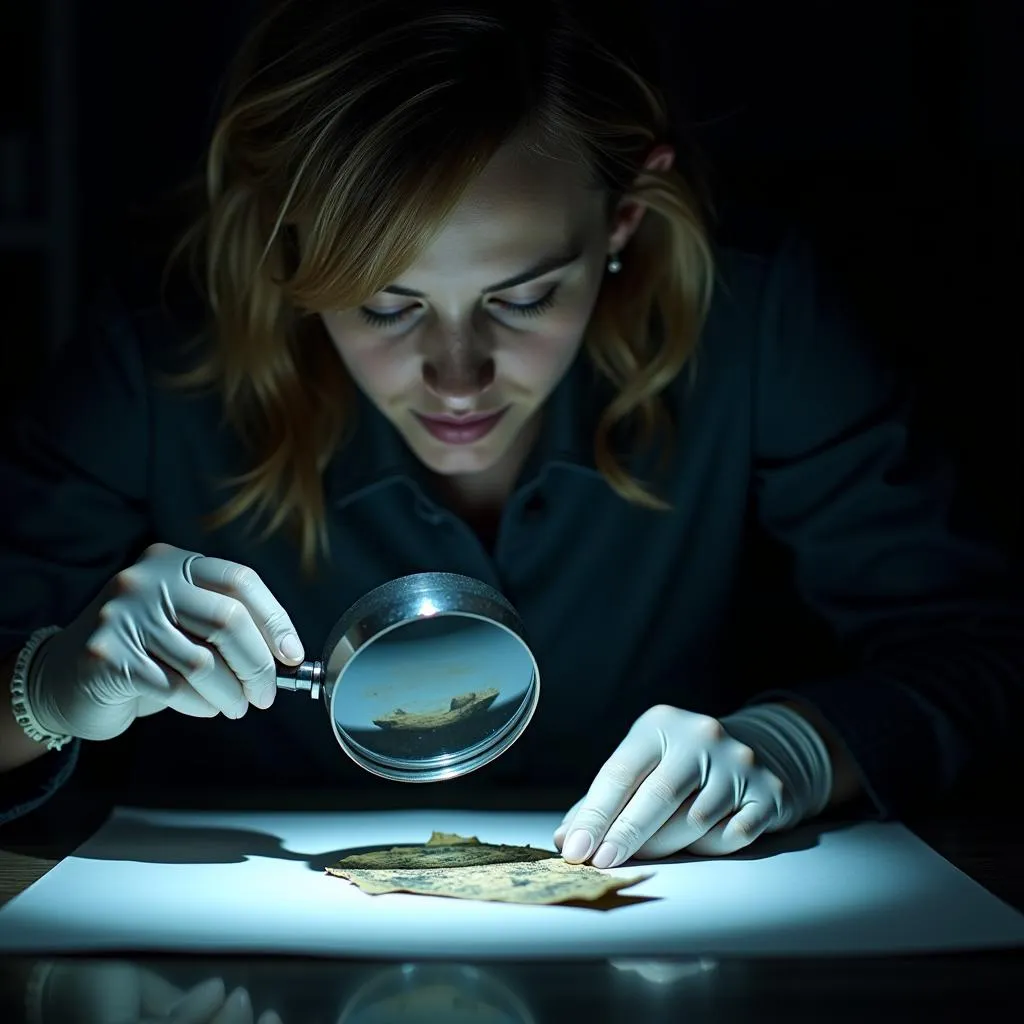The quest to understand the unknown often leads us down winding paths, particularly in the realm of the paranormal. As we navigate this enigmatic landscape, two phrases frequently emerge: “evidence based” and “research based.” While seemingly interchangeable, these terms represent distinct approaches to unraveling the mysteries of the unexplained. Understanding their nuances is crucial for anyone intrigued by paranormal phenomena, enabling discerning interpretation of information and ultimately, a deeper appreciation for the complexities of this fascinating field.
Delving into the Data: Evidence Based Investigations
 Paranormal investigator examining evidence
Paranormal investigator examining evidence
Evidence-based investigations prioritize tangible proof. This approach hinges on collecting and analyzing physical data, such as photographs, audio recordings, and environmental readings, to validate or debunk paranormal claims. The emphasis lies on objective analysis, employing scientific methodologies to eliminate mundane explanations and assess the possibility of genuine paranormal activity.
Imagine a team investigating a supposedly haunted house. An evidence-based approach would involve:
- Electromagnetic Field (EMF) Readings: Measuring electromagnetic fluctuations that might indicate unseen energy sources.
- Temperature Anomalies: Identifying sudden drops or spikes in temperature, often associated with spirit presence.
- Electronic Voice Phenomena (EVP): Recording audio for potential spirit voices, followed by meticulous analysis to rule out interference or natural sounds.
Unveiling Patterns: The Power of Research Based Exploration
Research-based exploration delves into the historical, cultural, and psychological aspects surrounding paranormal phenomena. This approach goes beyond immediate physical evidence, seeking patterns and connections across time and cultures. By examining folklore, eyewitness accounts, and historical records, researchers strive to understand the origins of beliefs, cultural interpretations, and potential psychological factors that contribute to paranormal experiences.
Consider the legend of a haunted bridge. A research-based approach would involve:
- Historical Research: Investigating local archives for accounts of accidents, tragedies, or unusual events associated with the bridge.
- Folklore Analysis: Examining local legends, stories, and beliefs passed down through generations about the bridge and its alleged haunting.
- Psychological Inquiry: Exploring psychological factors like pareidolia (seeing patterns in random data) or suggestibility that might influence perceptions and experiences at the bridge.
Bridging the Gap: Evidence and Research in Harmony
While distinct, these approaches are not mutually exclusive. In fact, the most comprehensive paranormal investigations employ both evidence-based methods and research-based exploration in tandem.
“Combining rigorous evidence collection with in-depth research provides a more holistic understanding of paranormal phenomena,” explains Dr. Emily Carter, a leading researcher in parapsychology. “It allows us to move beyond isolated incidents and explore potential connections and underlying patterns.”
Finding Answers in the Unknown: A Multifaceted Approach
The quest for answers in the paranormal realm demands an open mind and a willingness to explore diverse avenues of inquiry. By embracing both evidence-based and research-based approaches, we can navigate the complexities of this intriguing field with greater discernment and a deeper appreciation for the mysteries that continue to captivate and challenge our understanding.
Remember, the pursuit of paranormal knowledge is a journey, not a destination. By employing critical thinking, embracing diverse methodologies, and remaining open to possibilities, we can continue to shed light on the unexplained, one investigation at a time.